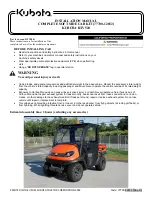
Ampcontrol Pty Ltd
– ABN 28 000 915 542
GASGUARD CH4 GAS SENSOR USER MANUAL
GSB076 Version 6
– March/2019
Uncontrolled Copy - Refer to Ampcontrol Website for Latest Version
Page 9 of 25
A
P
P
R
OV
E
D
FOR
E
X
T
E
R
N
A
L
D
IS
TR
IB
U
T
ION
–
P
R
OP
E
R
T
Y
OF
A
M
P
C
ON
TR
OL
P
T
Y
LTD
–
N
O
T
T
O
B
E
R
E
P
R
OD
U
C
E
D
I
N
P
A
R
T
3.1 Sensor Details
3.1.1 Methane Gas Sensor
The Methane Gas Sensor, which operates on the catalytic combustible gas detection principle, is a
small platinum element coated in a catalyst. Electrical current is passed through the platinum wire and
the potential of the catalytic element is monitored by a simple Wheatstone Bridge arrangement.
Combustible gases, once in contact with the heated catalytic surface of the measuring element, react
and cause the surface temperature of the element to rise. Any increase in temperature affects the
resistance of the platinum wire, causing a small shift in potential across the Wheatstone Bridge
proportional to the concentration of the combustible gas. The sensor is temperature compensated and
provides a 4/20mA linear output.
3.1.2 Sensor Cell Cross Sensitivity
Methane gas sensors positively detect the presence of all flammable gases. It is unable to distinguish
the difference between gases so the sensor will display a reading if any flammable gas is present. The
table below details the cross sensitivity data for a methane sensor.
Table 1: Sensor Cell Cross Sensitivity
Gas
Concentration
Reading (%v/v)
Acetic Acid
4.0%
1.45
Acetone
2.6%
2.5
Ammonia
15%
6.25
Benzene
1.2%
2.0
n-Butane
1.8%
2.5
Carbon Monoxide
12.5%
4.0
Chlorobenzene
1.3%
1.7
Ethanol
3.3ppm
2.95
n-Hexane
1.2%
2.0
Hydrogen
4.0%
4.0
Methane
5.0%
5.0
Methanol
6.7%
4.25
n-Pentane
1.4%
2.0
Propane
2.1%
2.5
Toluene
1.2%
2.0
3.1.3 Poisoning of Sensors (Contamination)
High levels of or long exposure to certain compounds may poison the catalytically active detector
filament thereby reducing or destroying its sensitivity.
Among these compounds are halides, sulphur compounds, leaded petrol, silanes, silicates and other
produces with silicon. Products such as aerosol sprays, polishes, waxes and lubricants with silicones
and non-
catalysed silicone rubbers such as “silastic”, phosphate esters and hydraulic fluids all damage
catalytic sensors.
CAUTION!
Exposure to Hydrogen Sulphide gas (H2S) may affect the performance
of the detector by reducing its sensitivity to methane. If the sensor is
exposed to H2S gas then the detector must be recalibrated.










































